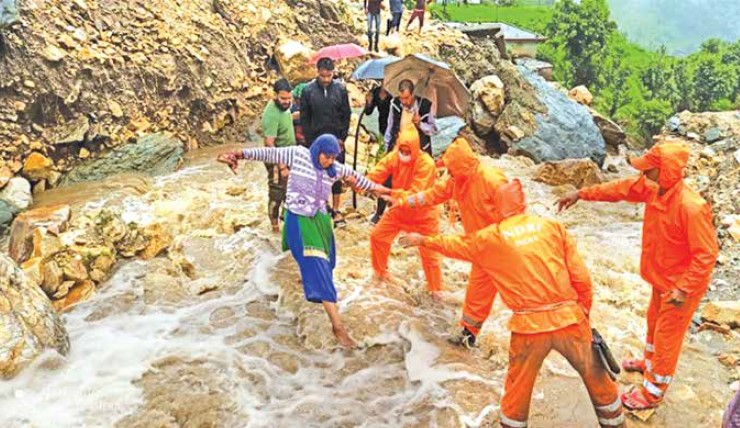Neeharika Chauhan is a highly skilled Project Associate (DRR) at Geo Climate Risk Solutions Pvt. Ltd., based in Uttarakhand, a region frequently impacted by natural disasters. With a solid academic and professional background in disaster management, she brings comprehensive expertise in risk assessment and mitigation strategies, complemented by substantial field experience. Her commitment to strengthening community resilience against climate-related risks is evident in her proactive approach to implementing effective, evidence-based solutions. Neeharika’s deep understanding of the local landscape and her technical expertise make her a critical asset in advancing disaster management efforts in Uttarakhand’s challenging environmental context
This article explores the critical role of early warning systems and evacuation plans in mitigating the impacts of floods in Uttarakhand, a state vulnerable to natural disasters. It examines advancements such as the Uttarakhand Multi-Hazard Early Warning System, which integrates technology with community engagement to enhance disaster preparedness. The effectiveness of existing systems is assessed, highlighting lessons learned from past flood events, including the catastrophic floods of 2013, 2021 and 2023. The article emphasizes the importance of comprehensive evacuation protocols, community involvement, and continuous improvements to ensure timely responses and ultimately safeguard lives in this ecologically sensitive region.
Uttarakhand, a state known for its majestic mountains and serene rivers, has also witnessed devastating floods in recent years, particularly in 2013 and 2023. These disasters have highlighted the urgent need for effective early warning systems and evacuation plans to protect lives and minimize damage
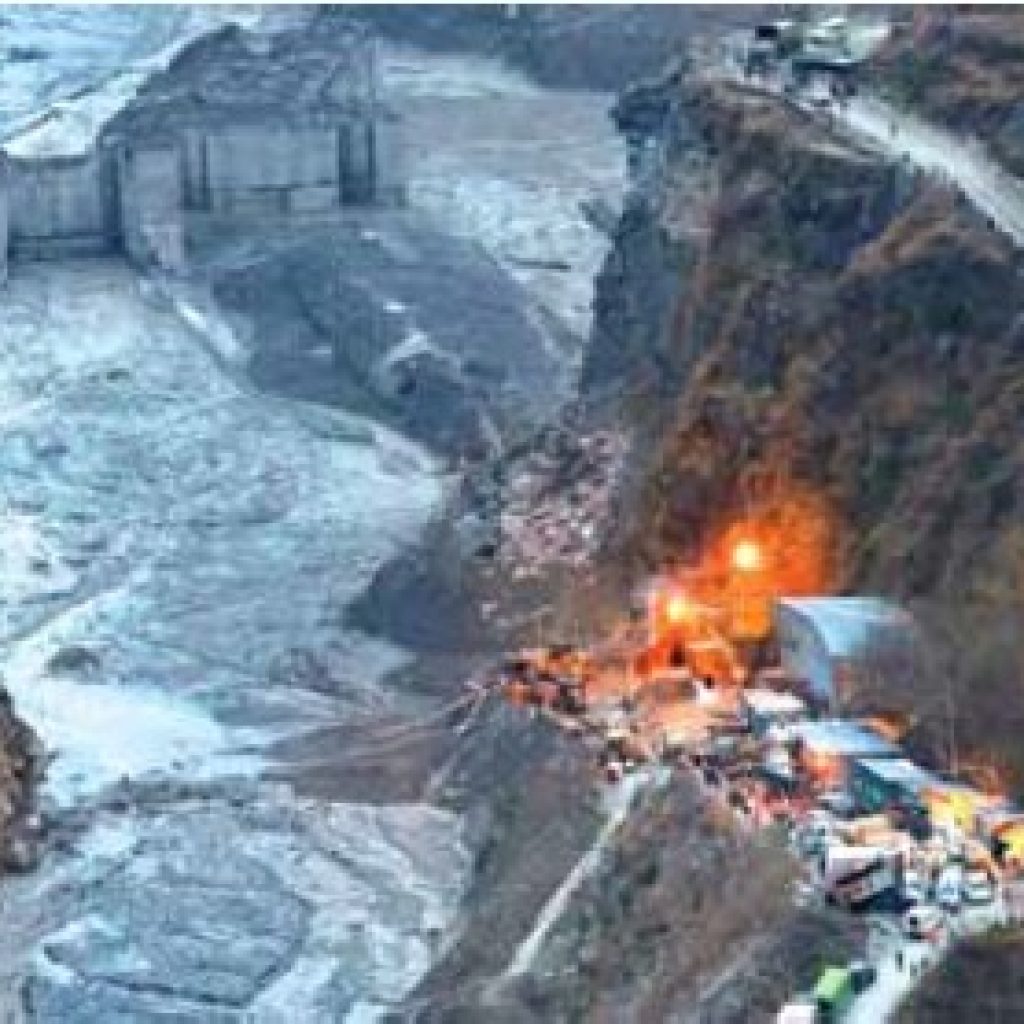
The Importance of Early Warning Systems
Early Warning Systems (EWS) play a critical role in disaster preparedness, particularly in mountainous regions that are vulnerable to floods. These systems facilitate the monitoring of weather patterns, hydrological data, and other key indicators that provide early signals of potential disasters. In regions such as Uttarakhand, where monsoon rainfall is highly unpredictable and the complex topography presents additional challenges, the development and implementation of advanced EWS are essential to mitigate risks and enhance preparedness.
The Indian Meteorological Department (IMD) holds a critical responsibility in delivering weather forecasts and issuing warnings. Recent technological advancements, such as satellite imagery and remote sensing, have significantly enhanced the accuracy of these predictions. Despite these improvements, a major challenge persists in ensuring the timely and effective dissemination of this information to at-risk communities, particularly those located in remote and inaccessible regions of Uttarakhand’s complex terrain.
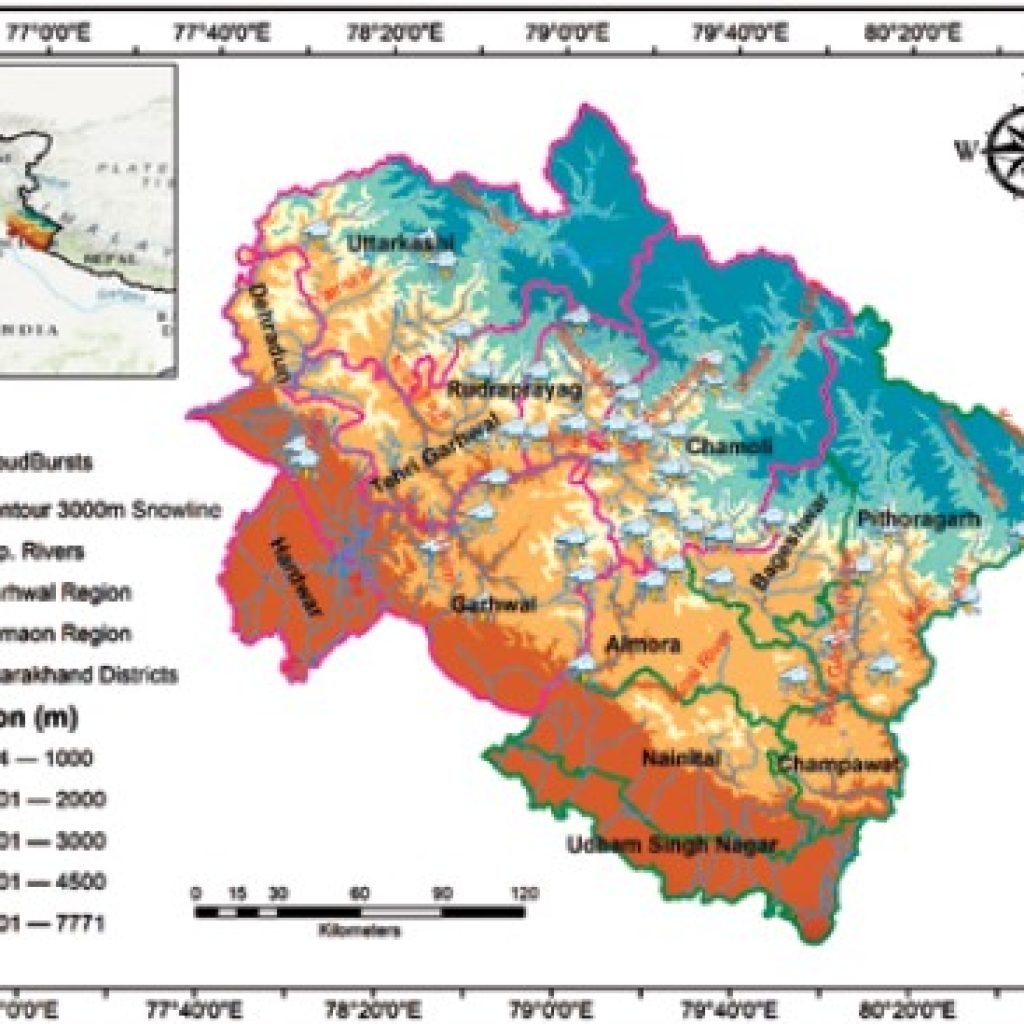
Uttarakhand Multi-Hazard Early Warning System: A Step Towards Resilience
One of the most significant advancements in Uttarakhand’s disaster preparedness is the Uttarakhand Multi-Hazard Early Warning System. Announced on June 24, 2023, this project is designed to enhance the state’s capacity to respond to various natural calamities, including floods, landslides, and earthquakes. With an initial budget of ₹118 crore approved by the High Powered Committee, and funding from the World Bank, this initiative aims to install sirens at 250 strategically chosen locations across the state as part of its first phase.
The unique aspect of this early warning system is its integration with mobile communication infrastructure. Sirens will be mounted on existing mobile towers in sensitive areas, with new towers installed where necessary. Alerts generated by the Indian Meteorological Department (IMD) and the Central Water Commission will be disseminated through these sirens, ensuring timely notifications to communities at risk.
One of the innovative features of the Uttarakhand Multi-Hazard Early Warning System is its ability to issue distinct sounds for different types of disasters. This approach not only alerts residents but also educates them about the nature of the impending threat, allowing for quicker, more informed responses. Control rooms at three levels—local, district, and state—will manage the activation of the sirens, ensuring comprehensive coverage and responsiveness in emergency situations.
As Uttarakhand embarks on this journey towards enhanced disaster preparedness, it sets a precedent as the second state in India to adopt such a system, following Kerala’s initiative. With plans to expand the siren network to 1,000 locations in subsequent phases, this project represents a vital step in safeguarding lives and properties against the backdrop of the region’s vulnerability to natural disasters.
Effectiveness of Existing Systems
While Uttarakhand has made significant strides in developing early warning systems (EWS) for natural disasters, the effectiveness of these systems can vary widely based on several factors, including geographical and infrastructural challenges. The catastrophic events of 2013, where the failure to provide timely alerts resulted in the loss of thousands of lives and widespread property damage, highlighted critical gaps in disaster preparedness. This tragedy prompted a comprehensive evaluation of existing protocols and served as a catalyst for reform in the state’s disaster management approach.
The Indian Meteorological Department (IMD) significantly enhanced its Early Warning Systems (EWS) in Kerala during a period of heavy rainfall. Building on lessons from past disasters, IMD issued more detailed and timely alerts from July 30, 2024 onward, which played a crucial role in facilitating evacuations from vulnerable areas. These alerts highlighted the risks of landslides, flash floods, and general flooding. The updated system not only categorized weather conditions through color-coded alerts—green, yellow, orange, and red—but also introduced an impact-based forecasting approach. This shift allowed authorities to better prepare for disasters by linking alerts with potential impacts, improving decision-making. Although some critiques emerged regarding IMD’s conservative approach, their enhanced methodology led to more effective disaster response and showcased how a well-coordinated EWS can mitigate risks (Unnikrishnan S, 2024) .
Local authorities, NGOs, and community leaders played a vital role in ensuring that these warnings reached those most at risk. On the morning of February 7, local residents observed a massive cloud of dust and ice rapidly flowing through the Rishi Ganga river, signalling an impending disaster. Despite their efforts to alert others, the warning systems installed at nearby hydropower projects, including Rishi Ganga and Tapovan Vishnugad, failed to activate in time. The sheer volume of ice and debris from the Glacial Lake Outburst Flood (GLOF) overwhelmed the alarm systems, preventing timely warnings. Community members played a crucial role in responding to the incident, but the disaster exposed significant gaps in the existing early warning infrastructure. Moving forward, it has been determined that government-backed early warning systems will be installed, specifically to monitor glacier activity, to better protect downstream projects and communities (Jayashree N., Joshimath 2021).
Moreover, the reliance on technology must be complemented by community knowledge and engagement to ensure that the information is understood and acted upon promptly. Strengthening the resilience of these communities involves not only enhancing technological systems but also investing in local capacity building and infrastructure development. This holistic approach is essential for improving the reach and impact of early warning systems, ensuring that even the most vulnerable populations are adequately informed and prepared for impending disasters. By addressing these ongoing challenges, Uttarakhand can further enhance its disaster preparedness and ultimately save lives during future emergencies.

Uttarakhand Floods 2024: A Crisis in the Mountains
On August 5, 2024, Uttarakhand faced severe repercussions from flash floods and cloudbursts, highlighting the ongoing vulnerabilities of this ecologically sensitive region. The aftermath of intense rainfall on July 31 resulted in the tragic loss of 17 lives and injuries to 25 others(Sphere India Situation Report 1, 2024). The situation worsened as key routes, including the Kedarnath Yatra, were rendered hazardous due to the destruction of both concrete and footbridges along the trek. Critical areas like Ghoraparav, Lincholi, Badi Lincholi, and Bhimbali were obstructed by boulders, underscoring the urgent need for enhanced disaster management strategies to protect lives and property in such vulnerable zones
The State Disaster Response Force (SDRF) personnel are actively engaged in rescue missions to assist stranded pilgrims along the Kedarnath Yatra route. The National Disaster Management Authority (NDMA) has issued a ‘red alert’ for the state, warning of extremely heavy rainfall in districts such as Dehradun, Champawat, Haridwar, Nainital, Pauri Garhwal, Tehri Garhwal, and Udham Singh Nagar.
Key Impact and Casualties
The torrential rains not only led to flooding but also caused the collapse of residential structures, trapping hundreds of people. Specifically, the Kedarnath pilgrimage route was severely affected, with both concrete and footbridges damaged, leading to the suspension of the Kedarnath Yatra due to hazardous conditions. Trekking routes were obstructed by boulders in areas such as Ghoraparav, Lincholi, Badi Lincholi, and Bhimbali, further complicating rescue efforts.
Statistics and Current Situation
The scale of the disaster is highlighted by several key statistics:
• Casualties: 17
• Injured: 25
• Roads Affected: 70 in the last 24 hours
• Pilgrims Airlifted: 10,374 in the last four days
• Pilgrims Stranded: 120
Data Source- Sphere India
As of August 5, approximately 882 relief personnel are engaged in providing essential services such as food, water, and temporary shelters for stranded individuals. The Indian Army is constructing a temporary bridge at Sonprayag to facilitate the evacuation process.
The Bal Ganga and Budhakedar areas of the Bhilangana development block in Tehri Garhwal experienced heavy rains and landslides, exacerbating the situation. The Indian Meteorological Department has forecasted continued heavy rainfall in various parts of Uttarakhand until August 8, further raising concerns about additional flooding and landslides. In a notable effort to improve road safety in the Budhakedar area, the government approved ₹8 crore for necessary infrastructure improvements, with the Irrigation Department directed to expedite the tender process.
Government and Rescue Operations
In response to the crisis, the Uttarakhand government has initiated several measures to assist affected residents and pilgrims. The Central Government deployed two Indian Air Force helicopters—Chinook and MI 17—to aid in rescue operations following a review by the Prime Minister’s Office. The Chief Minister of Uttarakhand conducted field inspections in Rudraprayag, assessing the extent of the damage and coordinating relief efforts.
Uttarakhand Disaster Management and Rehabilitation Secretary Vinod Kumar Suman said that a total of 7,234 passengers were rescued by August 2. On August 3, an additional 1,865 passengers were rescued and taken to safe locations, bringing the total to 9,099 passengers rescued by August 3 (Kamal K., 2024, JND).
Chief Minister Pushkar Singh Dhami assured that there will be no shortage of funds for disaster relief efforts. During his inspections, he instructed the Commissioner of Garhwal Division to oversee disaster relief camps and ensure adequate support for displaced families, including power backup, access to television, educational resources for children, and livelihood assistance.
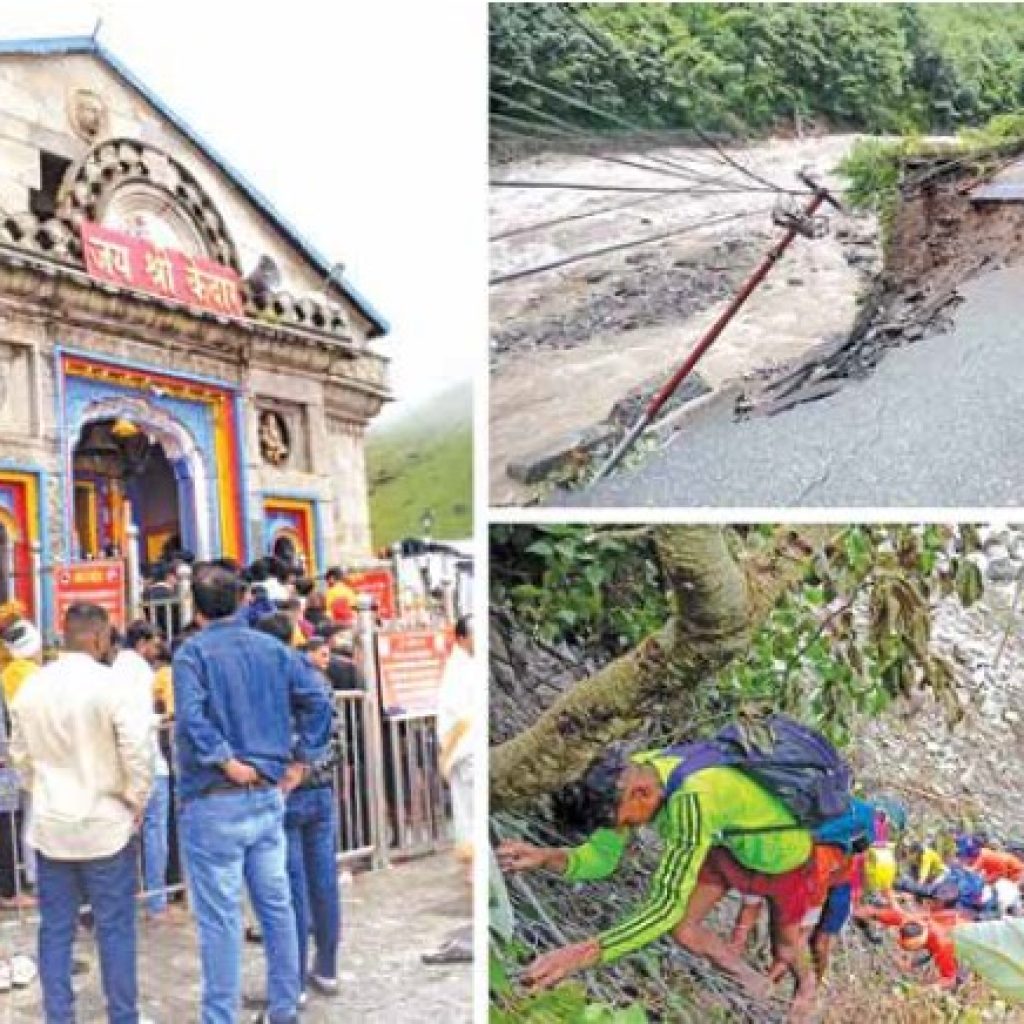
Community and NGO Response
Non-governmental organizations and community groups are mobilizing to address the urgent needs of affected families. Following a cloudburst in Ghansali, Tehri Garhwal, 90 families are in immediate need of assistance. Organizations such as the Revitalizing Rainfed Agriculture Network (RRAN) and the Mount Valley Development Association (MVDA) have launched humanitarian appeals to secure resources for food, clothing, temporary shelters, and water purifiers.
The floods in Uttarakhand serve as a stark reminder of the vulnerabilities faced by mountainous regions in the face of climate change and extreme weather events. As the state navigates this crisis, the effectiveness of early warning systems and evacuation plans will be critical in minimizing future risks and enhancing community resilience. The recent disaster underscores the importance of proactive disaster management strategies, timely government responses, and community engagement to safeguard lives in such ecologically sensitive areas.
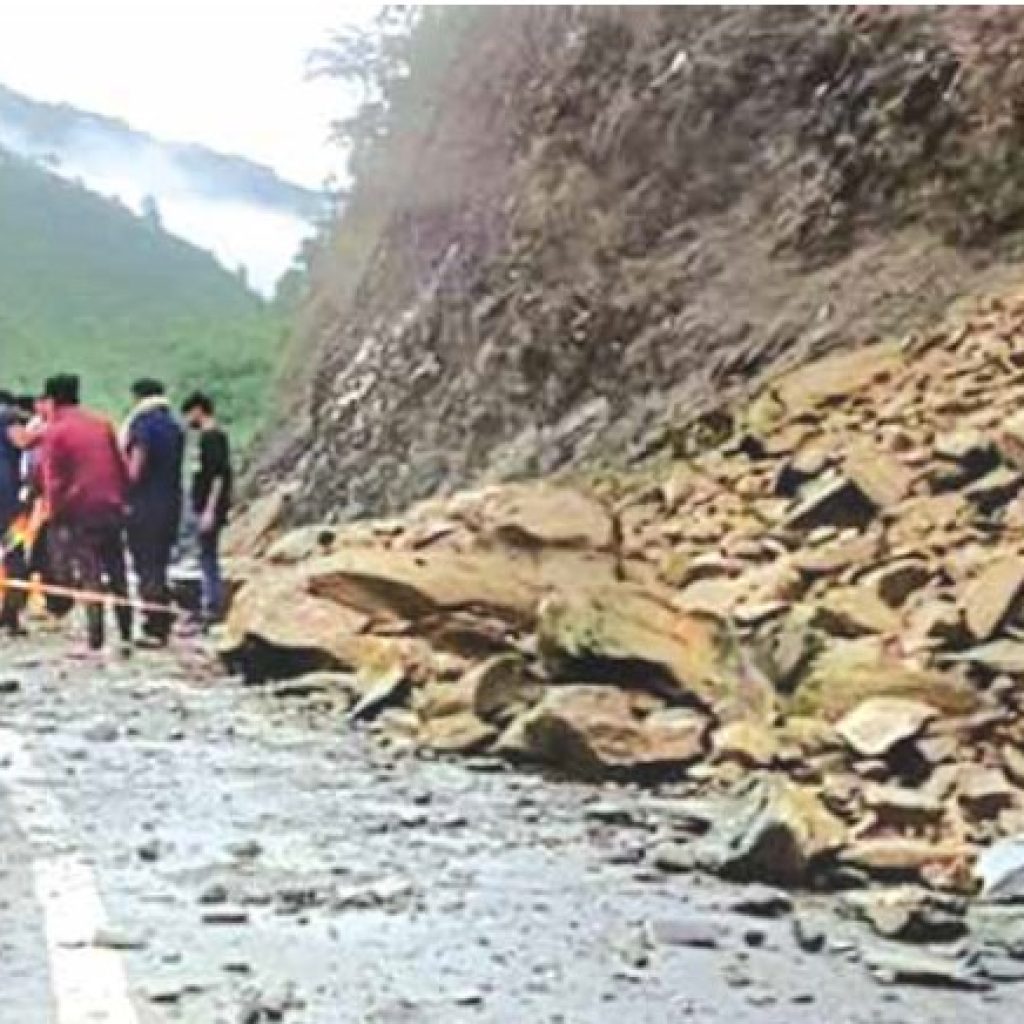
Evacuation Plans: A Critical Component
Evacuation is a crucial aspect of disaster management, representing the planned relocation of individuals from dangerous or potentially hazardous areas to safer locations. This process is designed not only to protect lives but also to ensure the well-being of communities during emergencies, such as floods, landslides, or other natural disasters. Effective evacuation plans are essential components of comprehensive disaster management strategies, particularly in regions prone to severe weather events like Uttarakhand.
To ensure successful evacuations, comprehensive disaster management plans, such as the Village and Block Disaster Management Plans, must be developed and regularly updated. These plans should detail the identification of shelter sites, which need to be located within a reasonable distance—ideally no more than a one-hour walk or within five kilometres of residents’ homes. Additionally, alternative evacuation routes must be established well in advance to facilitate smooth and timely relocations. This forward-thinking approach mitigates panic and disorganization, which can often lead to chaos during emergencies. Moreover, the involvement of local authorities, law enforcement, and community organizations is crucial for maintaining order and security during evacuations.
The effectiveness of evacuation plans can be enhanced through community engagement, training, and regular drills. These activities empower residents with the knowledge and skills needed to respond effectively during an emergency. Educating the community about the evacuation process, including what to take and where to go, can significantly reduce confusion and save lives. Families should be encouraged to prepare emergency kits containing essential items such as food, water, clothing, toiletries, and important documents. By promoting preparedness at the household level, communities can respond more effectively when the need to evacuate arises.
Effectiveness of Evacuations in Disaster Response
The effectiveness of evacuation plans is ultimately determined by their ability to save lives and reduce suffering during emergencies. The success of such plans can be observed in the way they facilitate timely evacuations and the establishment of safe zones for displaced individuals. In Uttarakhand, the state’s government has initiated the creation of detailed evacuation plans that involve mapping vulnerable areas and identifying safe zones where evacuees can find shelter. This proactive approach is crucial, as it allows authorities to assess risks and allocate resources effectively, thereby enhancing the overall disaster response framework.
The integration of early warning systems (EWS) with evacuation plans is particularly significant in maximizing the effectiveness of emergency responses. Timely alerts from the Indian Meteorological Department (IMD) enable local authorities to execute evacuation protocols promptly, as seen in instances following heavy rainfall in Kerala 2024. The coordination between various stakeholders—including government agencies, NGOs, community leaders, and local residents—is essential for ensuring that warnings reach those most at risk and that evacuation processes run smoothly.
The persistent difficulties in accessing remote and isolated areas emphasize the critical need for ongoing enhancements in evacuation strategies. Establishing a framework for continuous knowledge exchange regarding terrain developments and fostering regular coordination among regional authorities is essential for ensuring timely updates and improving disaster response capabilities. In these regions, where infrastructure may be lacking, reliance on technology alone is insufficient. Community knowledge and engagement play a critical role in overcoming these challenges, as locals can offer valuable insights into the most effective evacuation routes and the best places for shelters. By fostering collaboration between government authorities and community members, Uttarakhand can enhance its disaster preparedness and response capabilities. Regular training, drills, and awareness campaigns should be conducted to ensure that all stakeholders understand their roles during an evacuation.
Effective evacuation planning is a cornerstone of disaster risk reduction in Uttarakhand. By recognizing the unique challenges posed by the region’s topography and climate, the state can develop robust strategies that prioritize the safety and well-being of its residents. Through community engagement, comprehensive planning, and the integration of early warning systems, Uttarakhand can improve the effectiveness of its evacuation processes, ultimately safeguarding lives and fostering resilience in the face of natural disasters.
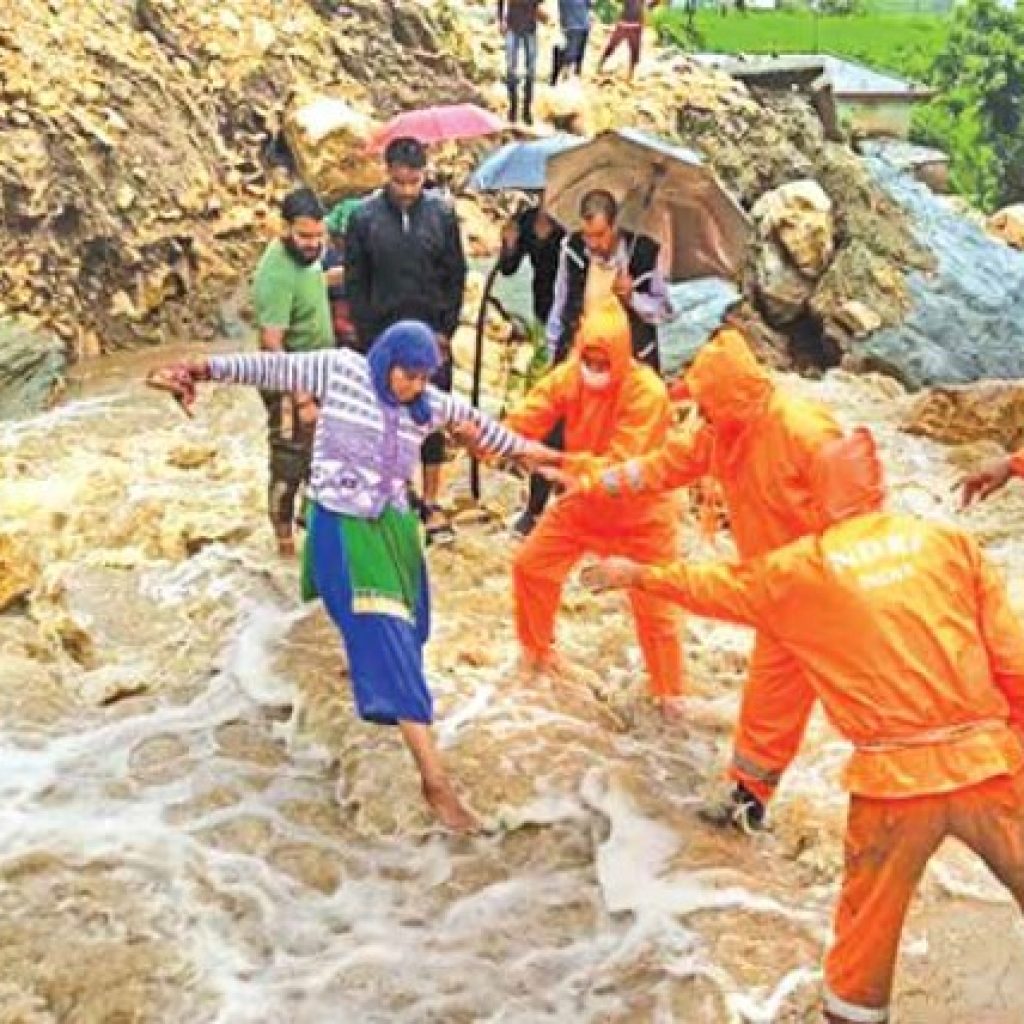
Capacity Building for Disaster Management: A Comprehensive Approach
Capacity building in disaster management is crucial for enhancing the resilience of communities and minimizing the impacts of disasters. It involves developing the skills, knowledge, and infrastructure necessary to effectively prepare for, respond to, and recover from emergencies. At its core, capacity building is about empowering individuals and organizations with the expertise and resources required to manage disasters efficiently. As the frequency and intensity of disasters increase globally, the importance of robust capacity building programs has never been more evident.
The first step in this process is recognizing that the ability to withstand and respond to disasters hinges on having well-trained personnel and efficient emergency response mechanisms. Training is essential, as it equips various stakeholders—including government agencies, non-governmental organizations (NGOs), and community members—with the skills they need to act swiftly during a crisis. This involves practical training in search and rescue operations, first aid, and shelter management. For example, training police forces, home guards, and health department members in disaster-specific scenarios—such as earthquakes, landslides, and fires—ensures that these individuals are prepared to handle real-life emergencies with confidence and effectiveness. (usdma.uk.gov.in)
Moreover, advanced training courses can significantly enhance the capabilities of responders. Implementing specialized programs, like advanced search and rescue courses, can refine the skills of personnel to deal with complex disaster scenarios. It is also essential to regularly assess the training needs of various stakeholders to ensure that the training provided is relevant and up to date. This assessment process can help identify gaps in knowledge and skills, allowing for the development of tailored training programs that address specific community needs.
In addition to formal training, capacity building should include community awareness initiatives. Empowering local populations through knowledge-sharing sessions can foster a culture of preparedness. By involving youth organizations such as the National Cadet Corps (NCC) and local clubs, disaster management training can reach diverse demographics, ensuring that community members understand their roles during emergencies. The involvement of NGOs is also pivotal in this context. They can leverage local knowledge and resources, engage communities in preparedness activities, and promote a sense of self-reliance.
A crucial aspect of capacity building is the establishment of effective control rooms and emergency operation centers (EOCs) equipped with state-of-the-art technology. These facilities should operate continuously to coordinate disaster response activities efficiently. The integration of technology into disaster management not only streamlines communication but also facilitates better resource allocation during emergencies.
Another vital component of capacity building is training technical manpower, including architects, engineers, and planners, in disaster-resistant infrastructure design and construction practices. By prioritizing training for these professionals, we can ensure that future developments are resilient to disasters. This forward-thinking approach is essential in reducing vulnerability and enhancing the overall safety of communities.
Ultimately, capacity building is an ongoing process that requires the collaboration of all stakeholders involved in disaster management. It is not solely the responsibility of government agencies; rather, it is a collective effort that involves local communities, NGOs, and civil society organizations working together towards a common goal: to create safer, more resilient environments. By fostering a culture of preparedness and continuous learning, we can significantly enhance our ability to respond to disasters effectively, minimizing loss of life and property, and facilitating quicker recovery for affected communities. This comprehensive strategy will ensure that we are not only prepared for the next disaster but also equipped to build a more resilient future for all.
Conclusion As Uttarakhand continues to grapple with the threat of floods, enhancing early warning systems and evacuation plans remains a priority. The integration of advanced technology, community participation, and government support can lead to more effective disaster management strategies. By learning from past experiences and fostering a culture of preparedness, Uttarakhand can better protect its residents and minimize the impact of future floods. The journey towards resilience is ongoing, and the collaboration between government agencies, local communities, and NGOs will be critical in creating a safer environment for all.


